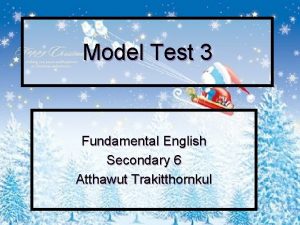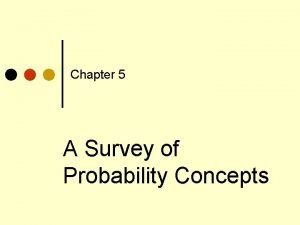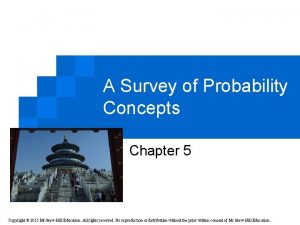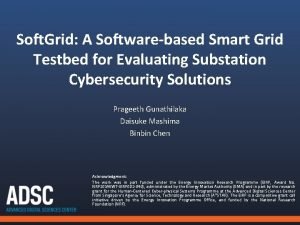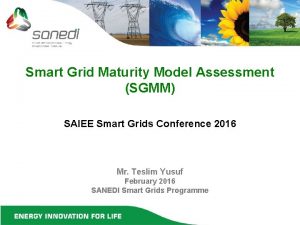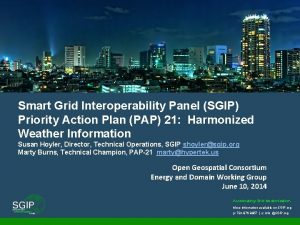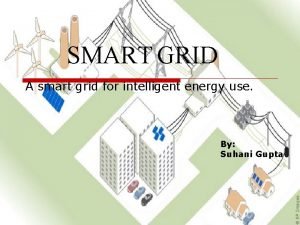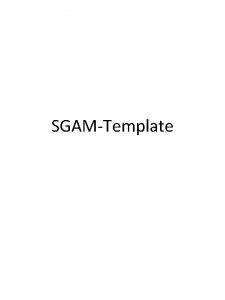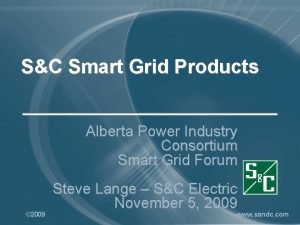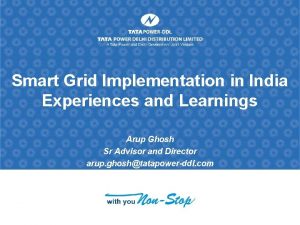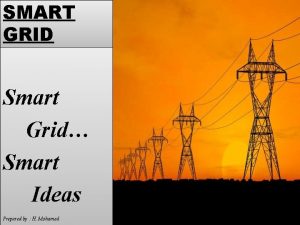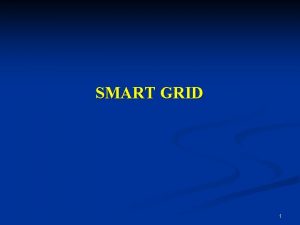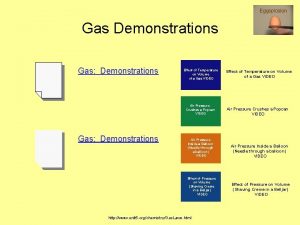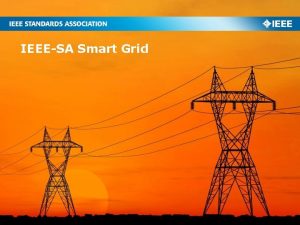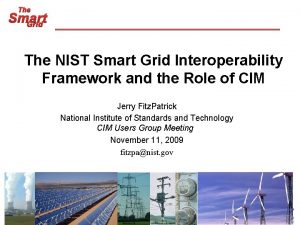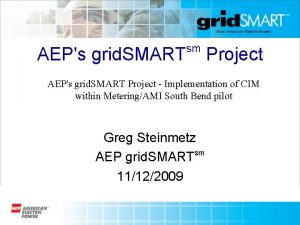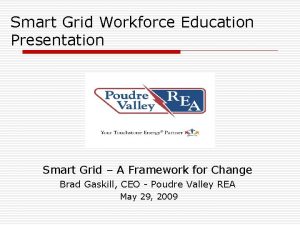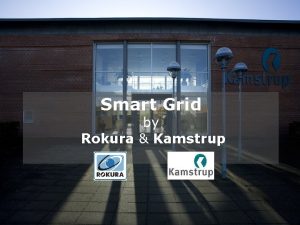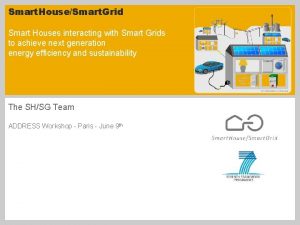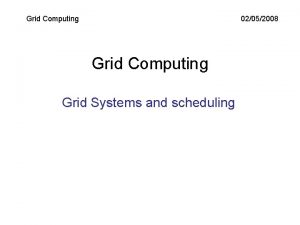Survey of Smart Grid concepts and demonstrations Smart















- Slides: 15

Survey of Smart Grid concepts and demonstrations Smart substation Ari Nikander 1. 10. 2

Content 1. Drivers and requirements 2. New setup with a central station computer 3. Functionality in future smart substations 4. Aspects of electricity network company 5. Device applications 6. Summary

Drivers for Smart substation • Distributed generation / distributed energy resources (DER) • Electric vehicles • Extensive cabling of MV networks Ø New needs for condition monitoring Ø Active methods for compensation of residual earth fault current • Utilizing of islanded operation • Legislation Ø Responsibilities for network companies Ø E. g. reporting and fault statistics • Rapid development of protection systems Ø Need for adapting new requirements - no willingness to continuous and costly upgrades of the whole protection system

Drivers for Smart substation • Ageing network and substations Ø Renewal asset needs Ø Significant amount of Finnish substation installations start to be outdated and must be refurbished. • Conflicting requirements: Ø Low life cycle costs Ø Fast new technology utilization • The control of the network moves further away from the actual physical network Ø Company fusions • Introduction and increasing acceptance of the IEC 61850 standard

New setup with a central Station Computer (ABB) • Corresponding approaches have also been investigated by other vendors Ø Often more centralized functionality Ø Centralized><decentralized – – – Reliability Costs Commercial off-the-shelf (COTS)

Functionality in future smart substations • Division based on the importance of the functions Ø First functionality group – Functions must operate within a given short operate time. – High security requirements - functions need to be backed up – Mandatory functions such as primary protection and control functions Ø Second functionality group – Optional functions, such as monitoring and analysis – Not vital for safe operation of the network – Necessary for continuous delivery process, “preventative functions”

Functionality in future smart substations • Division based on the location of the functions Ø Unit level functions – Functions need measured data from the unit e. g. feeder bay. – The algorithm can be considered “simple” but it can be either a very important protection function (e. g. overcurrent protection) or a value added functionality (e. g. circuit breaker condition monitoring) – Extensively investigated and widely used in unit level protection and control IEDs – More closely connected to the electricity distribution process – Longer life cycles than station level functions

Functionality in future smart substations • Division based on the location of the functions Ø Station level functions – Need or make use of data from several sources. – Algorithms can be more complex making the computational requirements more demanding. – Updated more frequently due to new inventions or new requirements e. g. through legislation. – Can include both critical protection functions (e. g. high impedance earth fault protection, bus bar protection, etc. ) and value added functionality (e. g. fault location algorithm) – Currently often implemented on the unit level where they sometimes cause unnecessary upgrades of the IEDs and increase the need for communication between IEDs.

Functionality division criteria • Communication requirements • Response time • Utilization frequency Ø How often these functions are used in real-time operation of the distribution network? Ø Statistics gathered from different disturbances • Function maturity Ø How often an upgrade of the function can be expected?

Functionality division criteria • From the communication requirement point of view the following functions are more suited for the station level: Ø Protection functionality based on multiple source measurements • – Advanced directional earth fault protection – Advanced directional overcurrent protection – Bus bar protection based on blockings Control operations based on blocking Ø Interlocking

Response times for different functions Fast response time Protection: Overcurrent, earth fault, overvoltage, differential Control: Circuit breaker operation Self supervision: Breaker failure, trip circuit supervision Slow response time Protection: Overload, phase discontinuity Control: Disconnector operation, autoreclosure Monitoring: Circuit breaker condition, PQ, disturbance recorder Supervision: IED self-supervision, CT/VT circuit supervision

Aspects of electricity distribution network company - main drivers • Renewal asset need • The EU climate and energy package: EU 20/20/20 targets • Making electricity clean • Smart grid plans of the network company • Cost efficiency in management, operation and purchasing • Increased customer demands

New substation concept of network company emphasizes • Standardized software based platform Ø Standard operating system Ø Well defined interface • Commercial off-the-shelf (COTS) hardware components Ø Standard computers Ø Standard communication products • Totally integrated software based functions • Software programs from different vendors with different functions Ø The best vendor for each product can be chosen • IEC 61850 as design base

Devices - earth fault protection and active compensation of residual current • RCC ground fault neutralizer Ø Centralized E/F protection Ø Residual current compensation Ø Measuring of phase-to-earth admittances Ø PD based diagnostic • First version introduced in 1993 • Total response time less than 3 cycles • Extensive cabling Ø Safety Ø Restriking faults

Summary • Different considerations for centralizing rate of the functions • Vendors and network companies Ø Ø Need for adapting new requirements Costs Reliability aspects Rapid development of protection systems - No willingness to continuous and costly upgrades of the whole protection system Ø Commercial off-the-shelf (COTS) • Some commercial device applications which represents centralized functionality exist.
 Horticulture demonstration ideas
Horticulture demonstration ideas If a ruby is heated it temporarily lose its color
If a ruby is heated it temporarily lose its color North bridge south bridge
North bridge south bridge Abcd of acls
Abcd of acls A survey of probability concepts chapter 5 solutions
A survey of probability concepts chapter 5 solutions General multiplication rule
General multiplication rule Smart grid presentation
Smart grid presentation Smart grid enables distributed energy management
Smart grid enables distributed energy management Smart grid soft
Smart grid soft Sgmm
Sgmm Smart grid interoperability panel
Smart grid interoperability panel A smart grid for intelligent energy use
A smart grid for intelligent energy use Sgam smart grid
Sgam smart grid Intelliteam smart grid
Intelliteam smart grid Smart grid maturity model
Smart grid maturity model Conclusion of smart energy
Conclusion of smart energy

